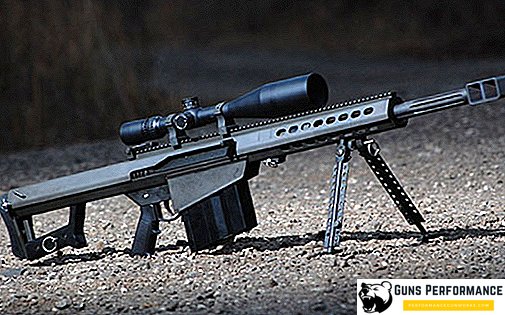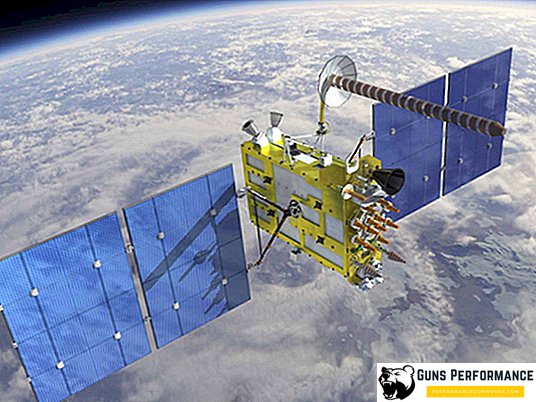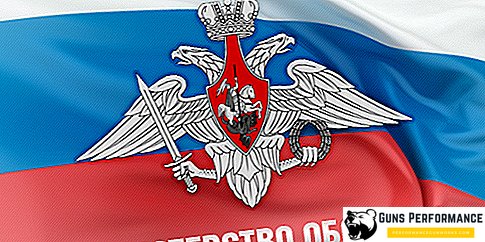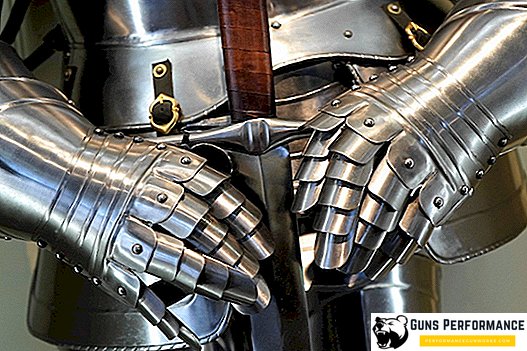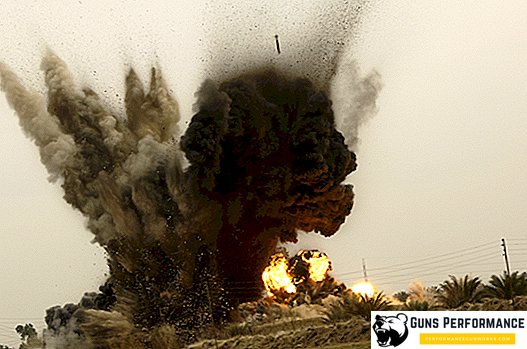The Soviet Union did not immediately join the "helicopter race" and at first had a lag behind the United States, which, even during the Korean War, understood the benefits of using helicopters. However, in the Soviet Union, they very quickly saw the advantages of using "rotary-wing machines" in the military sphere and began to catch up.
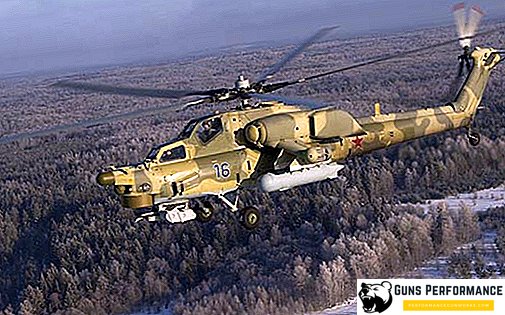
In the early 60s of the last century, Mil proposed to create a combat helicopter that could deliver fighters to the battlefield and, if necessary, support them with fire. The helicopter was supposed to install powerful weapons and create a decent landing bay in it. Thus began the story of the creation of the legendary helicopter - Mi-24, the Soviet "flying tank". In 1971, several of the first machines were transferred for flight tests. This helicopter had many different modifications, more than once it was modernized. He was a participant in many armed conflicts and wars, he passed the harsh school of Afghanistan, fought on different continents and in different camps. The “flying tank” is still in service and reliably serves in the Russian army and in other armies of the world.

But at the same time, the experience of the Afghan war showed that the army needed a new helicopter. The Mi-24 is a truly unique car, and over time it got rid of minor flaws, but the problem was its concept. Mi-24 was built in essence, like a flying BMP. Initially, it was conceived that a helicopter could deliver troops, and then cover it. The use of a helicopter in hostilities (especially in Afghanistan) showed that basically the machine is used as a helicopter attack, and the landing bay is simply not needed. In 1975, the USSR Ministry of Defense announced a competition for a new attack helicopter. The bureau of Kamov and Mil took part in it. The military needed an analogue of the American helicopter AH-1 Cobra.
In addition, the Soviet strategists were interested in one more thing - the possibility of using helicopters against enemy armored vehicles. A couple of years before the competition began, one episode happened that made an indelible impression on the Soviet military. In October 1973, eighteen Israeli AN-1 Cobra helicopters destroyed 90 Egyptian tanks without losing a single vehicle. So the Soviet designers were given the task of teaching the new helicopter to fight tanks.

The Kamov Design Bureau proposed a single Ka-50 at the competition, which later became the famous “Black Shark”, and the Mil bureau chose a simpler and cheaper way. The Mi-8 helicopter was once again redesigned. It completely eliminated the cargo compartment, changed the nose of the helicopter beyond recognition, and two crew members remained in the cockpit. A new, more powerful gun and a more advanced fire control system were installed on the helicopter.
In the mid-80s, after numerous tests, the Ka-50 won the competition for the creation of the attack helicopter. And the Mi-28 began to redo according to the wishes of the customer. The new helicopter, named Mi-28A, was shown in 1988 at an exhibition in Le Bourget. But then the USSR collapsed, and at the time everything was not up to the helicopters. The Mi-28 was put into service in 1995, and already in 1996, the Mi-28 N appeared - the first helicopter in Russia that could operate at any time of the day and in any weather. During this attack helicopter Mi 28 N got the nickname "night hunter".

Outwardly, this helicopter was very similar to the Mi 28 helicopter, with the exception of one detail that immediately caught the eye: a radar ball over the axis of the helicopter rotor. But this detail greatly changed the characteristics of the car, turning it from a fairly average car into one of the best helicopters in Russia, which could compete with any foreign counterparts.
Description and specifications of the machine
The Mi 28 combat helicopter was created according to the classic single-rotor scheme, it has one rotor and one tail rotor. Both screws have four blades. The car has a three-wheeled non-retractable chassis and a double cabin. The pilots are in it one by one. The cabin is armored, the most important components and systems of the helicopter are also covered with armor. Many important systems are duplicated. The engines are spaced on different sides of the fuselage. There is a small cargo compartment in which 2-3 people fit. The tail rotor is X-shaped. The speed of the car is over 280 kilometers per hour.

The helicopter provides for a crew rescue system in an emergency landing - these are special pilot seats and landing gear that can absorb shocks.
The Mi 28 combat helicopter is perfect for flying at ultra-low altitudes. He can hide behind the folds of the terrain and thus sneak up on the target without being noticed. However, the most important thing in this helicopter is its electronic equipment, which makes it a "night hunter". It includes a weapons control system, ILS, a helmet-based target designation system, which allows the pilot to control the cannon by simply turning the head. There is a thermal imager, a laser range finder. Also at the disposal of pilots a special system to control the helicopter at night.

The "Crossbow" radar (the ball can be seen above the propeller plane) allows the helicopter to fly and maneuver at extremely low altitudes, thus reducing the likelihood of being detected by the enemy. The onboard equipment complex allows the crew to go around the terrain and significantly improves the technical characteristics of the vehicle. The on-board radar "Crossbow" allows you to fly at any time of the day, it signals the pilot about obstacles in the path of the helicopter, including even such as trees and power lines. Thanks to the "Crossbow" Mi-28 N can hide in the folds of the terrain and expose only the top with the antenna.

The helicopter is guided by the physical fields of the Earth, and can also use satellite navigation. The database of the onboard computer stores a large number of three-dimensional maps of the combat area.
The "night hunter" has a system for suppressing IR radiation and a system for dropping heat traps. The helicopter has the ability to install interference for enemy radars and missile guidance heads.
Armament Mi 28 N consists of 30-mm automatic cannon 2A42, it can also carry both guided and unguided missiles. Air-to-air missiles can be mounted on the helicopter. The helicopter has four points of suspension. Also, the machine can be equipped to install minefields.
Basic tth Mi 28
| Modification | Mi-28 |
| Diameter of main screw, m | 17.20 |
| Diameter of tail rotor, m | 3.84 |
| Length m | 16.85 |
| Height, m | 3.82 |
| Weight, kg | |
| Empty | 7890 |
| normal takeoff | 10400 |
| maximum takeoff | 11500 |
| Domestic fuel, kg | 1500 |
| PTB, l | 4 x 500 |
| engine's type | 2 GTE Klimov TV3-117 |
| power, kWt | 2 x 1640 |
| Maximum speed, km / h | 282 |
| Cruising speed, km / h | 260 |
| Range of action, km | 460 |
| Rate of climb, m / min | 816 |
| Practical ceiling, m | 5750 |
| Static ceiling, m | 3450 |
| Crew | 2 |
| Armament | one 30 mm cannon 2A42; ATGM "Storm", "Attack" and "Whirlwind" |
The Mi 28 helicopter has several modifications that differ in technical characteristics, equipment, year of manufacture and other details.

Modifications of the Mi-28
- Mi-28. Experimental machine, which was sent for revision.
- Mi-28 A. Modified car. Notable for more powerful engine, X-shaped tail rotor, improved equipment. In the series did not go.
- Mi-28 L. Created for release under license in Iraq. In the series did not go.
- Mi-28 N. "Night Hunter". All-weather helicopter that can perform tasks at any time of the day.
- Mi-28 NE. The export version of the "night hunter".
- Mi-28 NM. The upgraded version of the Mi-28 N.
- Mi-28 UB. Combat training helicopter with dual control.
Speaking of the Mi-28, the following can be noted. In terms of its technical parameters, this attack helicopter is very similar to the American Apache, although it costs much less. In addition, the features of the Mi-24 are clearly visible in this helicopter. We can say that this machine is a very deep modernization of the "crocodile". New solutions in this helicopter are about 25-30% and this makes it very profitable. Many components and parts are well-developed and well known to technicians. Kamov machines are truly revolutionary helicopters, but therefore it is more difficult to launch them serially. So the choice of the Mi-28N as the main attack helicopter for the Russian army is very logical and economically beneficial.

The main question now is what will happen next. The Mi-28N can be called a good second-generation helicopter, the Russian equivalent of the Apache. But the American helicopter long ago in the series, tested in many conflicts, has several modifications. Russia, on the other hand, is just starting the serial production of "night hunters" During this time, the United States managed to create a new Comanche helicopter, made using stealth technology. And already had time to refuse it. The helicopter was not very successful from a technical point of view and too expensive even for the USA.

But this is probably not the case. Most likely, the era of attack helicopters is becoming a thing of the past. In their place will come the UAV. Unmanned vehicles are much cheaper, they have already proven their effectiveness and viability. Such devices are more efficient, stealth and maneuverability than helicopters. And while it does not need to risk the lives of pilots. In the development of such devices the first place so far belongs to the United States, but they are rapidly catching up with the Chinese army. Russia has lagged behind in this direction, all the developments so far exist only in the form of drawings and projects.




